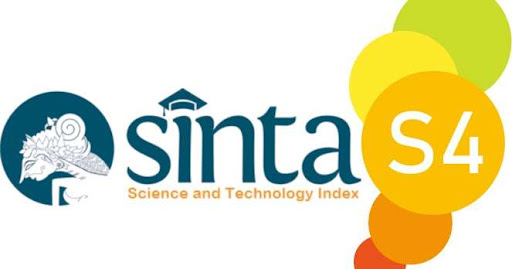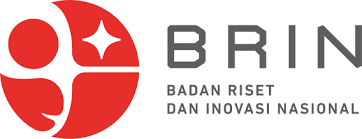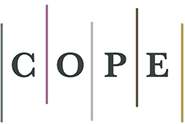Microplastic Contamination in Drinking Water Treatment Systems: A Case Study of Bedadung River Jember
DOI:
https://doi.org/10.51747/energy.v15i2.15205Keywords:
Microplastic, Drinking Water Treatment, FTIR Analysis, Polymer, Bedadung RiverAbstract
Microplastic contamination in drinking water systems is an emerging environmental and public health issue. This study investigated the abundance, size distribution, and polymer composition of microplastics across the Bedadung River water treatment chain, from source to consumer taps. Seven sampling points were established, including upstream locations, intake sites, treatment plant reservoirs, and tap water from two water treatment plants (Tegal Gede and Tegal Besar). Microplastic concentrations ranged from 49.33 to 160 particles/L, with particle sizes averaging 0.102–0.233 mm. Contrary to expected treatment outcomes, both plants demonstrated significant increases in microplastic concentrations post-treatment: Tegal Gede saw a 78% increase, while Tegal Besar exhibited a 140% rise. The highest contamination (160 particles/L) was recorded at the Tegal Besar treated water reservoir. These elevated microplastic levels in treated and consumer tap water highlight a critical gap in current water treatment processes, suggesting that material migration from treatment infrastructure, including plastic pipes and filtration components, may contribute to contamination. The predominance of fiber-type microplastics, mainly polyethylene terephthalate (PET), underscores the need for specialized microplastic removal processes and infrastructure upgrades to safeguard public health.
References
[1] Romaskila U, Widiastuti EL, Susanto GN, Damai AA, Juliasih NLGR. Karakteristik, Warna, Dan Ukuran Mikroplastik Yang Ditemukan Pada Air Dan Kerang Hijau Di Pulau Pasaran, Lampung. Journal of Tropical Marine Science [Internet]. 2023 Oct 11;6(2):147–54. Available from: https://journal.ubb.ac.id/jtms/article/view/4236
[2] Dekiff JH, Remy D, Klasmeier J, Fries E. Occurrence and spatial distribution of microplastics in sediments from Norderney. Environmental Pollution [Internet]. 2014 Mar;186:248–56. Available from: https://linkinghub.elsevier.com/retrieve/pii/S0269749113006088
[3] Neves D, Sobral P, Ferreira JL, Pereira T. Ingestion of microplastics by commercial fish off the Portuguese coast. Marine Pollution Bulletin [Internet].2015 Dec;101(1):119–26. Available from: https://linkinghub.elsevier.com/retrieve/pii/S0025326X15301582
[4] Al Abid G, Windusari Y. Identifikasi Cemaran Mikroplastik di Perairan SungaiMusi Wilayah Musi Banyuasin (Berdasarkan Konsentrasi Mikroplastik PadaParameter Biota). PREPOTIF : JURNAL KESEHATAN MASYARAKAT[Internet]. 2024 Sep 29;8(3):4840–5. Available from: https://journal.universitaspahlawan.ac.id/index.php/prepotif/article/view/33898
[5] Ayuningtyas WC. Kelimpahan Mikroplastik Pada Perairan di Banyuurip,Gresik, Jawa Timur. JFMR-Journal of Fisheries and Marine Research[Internet]. 2019 Apr 22;3(1):41–5. Available from: https://jfmr.ub.ac.id/index.php/jfmr/article/view/188
[6] Rochman CM, Hoh E, Hentschel BT, Kaye S. Long-Term Field Measurementof Sorption of Organic Contaminants to Five Types of Plastic Pellets:Implications for Plastic Marine Debris. Environmental Science & Technology [Internet]. 2013 Jan 9;47(3):130109073312009. Available from: https://pubs.acs.org/doi/abs/10.1021/es303700s
[7] Fachrul MF, Rinanti A. Bioremediasi Pencemar Mikroplastik di Ekosistem Perairan Menggunakan Bakteri Indigenous (Bioremediation of Microplastic Pollutant in Aquatic Ecosystem by Indigenous Bacteria). Seminar NasionalKota Berkelanjutan [Internet]. 2018 May 26;302–12. Available from: https://ejournal.trisakti.ac.id/index.php/kotaberkelanjutan/article/view/2910
[8] Browne MA, Crump P, Niven SJ, Teuten E, Tonkin A, Galloway T, et al.Accumulation of Microplastic on Shorelines Woldwide: Sources and Sinks.Environmental Science & Technology [Internet]. 2011 Nov 1;45(21):9175–9.Available from: https://pubs.acs.org/doi/10.1021/es201811s
[9] Puspitasari AI, Pradana HA, Novita E, Purnomo BH, Rini TS. Environmental Risk analysis of The Bedadung Watershed By Using DPSIR. IOP ConferenceSeries: Earth and Environmental Science [Internet]. 2020 May 1;485(1):012006. Available from: https://iopscience.iop.org/article/10.1088/1755-1315/485/1/012006
[10] Novita E, Firmansyah JW, Pradana HA. Penentuan Indeks Kualitas Air SungaiBedadung Kabupaten Jember Menggunakan Metode IP dan NSF-WQI. JurnalIlmu Lingkungan [Internet]. 2023 May 21;21(3):495–502. Available from:https://ejournal.undip.ac.id/index.php/ilmulingkungan/article/view/47731
[11] Novita, E., Bisri, M. I. M., & Pradana, H. A. 2023. Analisis Daya Tampung Beban Pencemaran Sungai Bedadung Jember Menggunakan Software WASP. Jurnal Teknosains, 13(1), 75-86.
[12] Novita E, Pradana HA, Dwija SP. Water quality Assessment at Bedadung River in Jember Regency. J Pengelolaan Sumberd Alam dan Lingkung. 2020;10(4):699–714.
[13] Solichah Z. Antara News JATIM. 2022 [cited 2025 Mar 24]. p. 1 Ecoton sorotibanjirnya sampah plastik di Sungai Bedadung Jember. Available from:https://www.antaranews.com/berita/2628769/ecoton-soroti-banjirnyasampah-plastik-di-sungai-bedadung-jember
[14] Nahwawi I. Surya.co.id. 2022 [cited 2025 Mar 24]. p. 1 Jadi Perhatian Serius DLH Jember, Dari 1700 Ton Sampah Per Hari, Baru Mampu Angkut 350 Ton. Available from: https://surabaya.tribunnews.com/index.php2022/12/15/jadiperhatian-serius-dlh-jember-dari-1700-ton-sampah-per-hari-baru-mampuangkut-350-ton?jxrecoid=0bf4e169-3e64-45965dff339c7ea0696~mix_tribunnews?source=widgetArtikelRekomendasi&engine=JXA PDAM. Dinas Komunikasi dan Informatika Kabupaten. 2023 [cited 2025 Jun5]. p. 1 Program Konservasi Unit Produksi Perumdam Tirta Pandalungan Jember. Available from: https://ppid.jemberkab.go.id/index.php/berita-ppid/detail/program-konservasi-unit-produksi-perumdam-tirta-pandalunganjember
[15] Dinas Komunikasi dan Informatika Kabupaten Jember. 2023 [cited 2025 June 07]. p. 1. Program Konservasi Unit Produksi Perumdam Tirta Pandalungan Jember. Available from: https://ppid.jemberkab.go.id/index.php/berita-ppid/detail/program-konservasi-unit-produksi-perumdam-tirta-pandalungan-jember
[16] Ariyunita S, Subchan W, Alfath A, Wardatun Nabilla N, Nafar SA. Analisis Kelimpahan Mikroplastik Pada Air Dan Gastropoda Di Sungai Bedadung Segmen Kecamatan Kaliwates Kabupaten Jember. JURNAL BIOSENSE [Internet]. 2022 Dec 3;5(2):47–51. Available from: http://ejournal.unibabwi.ac.id/index.php/BIOSENSE/article/view/2267
[17] Sholihin T. Analisis kandungan mikroplastik pada ikan di sungai bedadung jember jawa timur. 2023;1(2):818–24.
[18] X. Li, Y. Yu, M. Yang, S. Wen, and J. Zhang, "Tracking Microplastics Contamination in Drinking Water Supply Chain in Haikou, China: From Source to Household Taps," Toxics, vol. 12, no. 11, p. 0793, 2024. doi: 10.3390/toxics12110793
[19] Z. Wang, T. Lin, and W. Chen, "Occurrence and removal of microplastics in an advanced drinking water treatment plant (ADWTP)," Science of The Total Environment, 2020. doi: 10.1016/J.SCITOTENV.2019.134520
[20] J. Dalmau-Soler, R. Ballesteros-Cano, M. R. Boleda et al., "Microplastics from headwaters to tap water: occurrence and removal in a drinking water treatment plant in Barcelona Metropolitan area (Catalonia, NE Spain)," Environmental Science and Pollution Research, 2021. doi: 10.1007/S11356-021-13220-1
[21] N. Ulhasanah et al., "Characterization of Microplastics in Jakarta's Urban Downstream and Estuary Water Bodies," Ecological Engineering & Environmental Technology, 2024. doi: 10.12912/27197050/192678
[22] R. Amir, "Factors influencing microplastic contamination in bottled drinking water in Indonesia: a systematic review," Journal Article, 2023. doi: 10.22146/bkm.v39i10.7980
[23] F. Warmansyah et al., "Review of Microplastic Pollution in Indonesian Waters," Science and Environmental Journals for Postgraduate, vol. 5, 2023. doi: 10.24036/senjop.v5i2.197
[24] A. D. Radityaningrum, Y. Trihadiningrum, M. Mar'atusholihah, E. S. Soedjono, and W. Herumurti, "Microplastic contamination in water supply and the removal efficiencies of the treatment plants: A case of Surabaya City, Indonesia," Journal of Water Process Engineering, 2021. doi: 10.1016/J.JWPE.2021.102195
[25] G. L. Sari et al., "Investigation of Microplastics in Raw and Processed Water for Unbranded Refilled Drinking Water in Karawang, Indonesia," Journal Article, 2025. doi: 10.2139/ssrn.5071763
[26] M. D. Van, T. L. Thanh, and V. D. Ngo, "Distribution and occurrence of microplastics in wastewater treatment plants," Environmental Technology and Innovation, 2022. doi: 10.1016/j.eti.2022.102286
[27] T. Reza et al., "Microplastic Removal in Wastewater Treatment Plants (WWTPs) by Natural Coagulation: A Literature Review," Toxics, 2023. doi: 10.3390/toxics12010012
[28] Masura, J., et al. 2015. Laboratory methods for the analysis of microplastics in the marine environment: recommendations for quantifying synthetic particles in waters and sediments. NOAA Technical Memorandum NOS-OR&R-48.
Downloads
Published
Issue
Section
License
Copyright (c) 2025 ENERGY: JURNAL ILMIAH ILMU-ILMU TEKNIK

This work is licensed under a Creative Commons Attribution-NonCommercial 4.0 International License.














